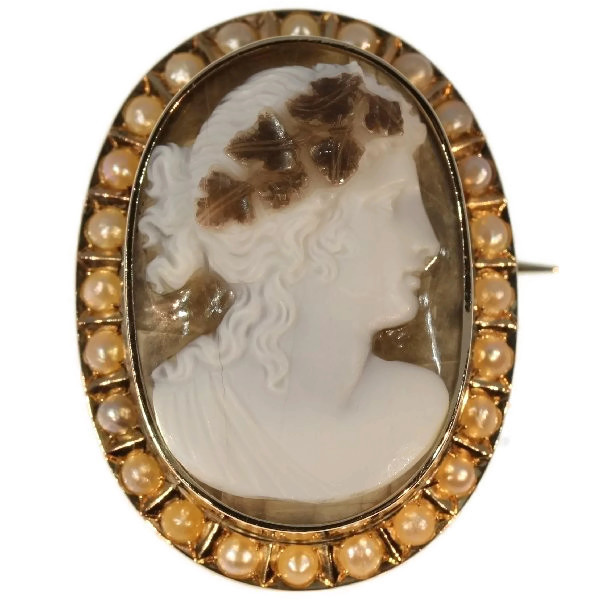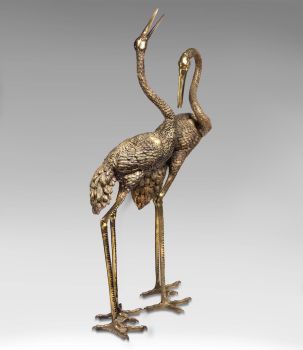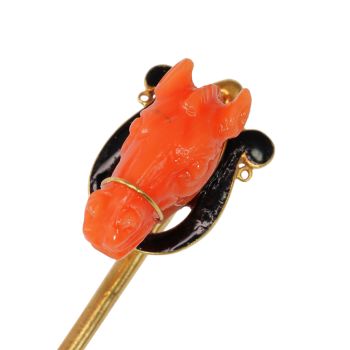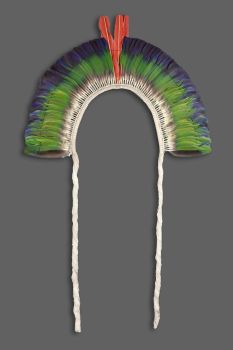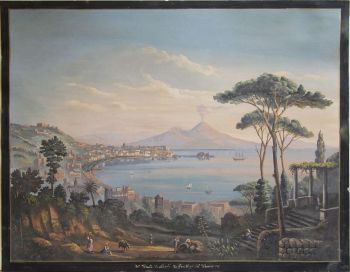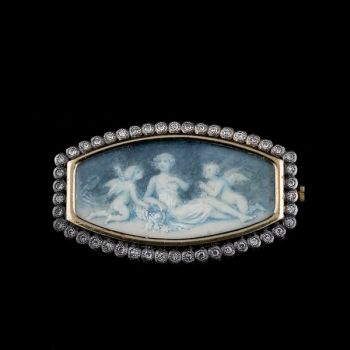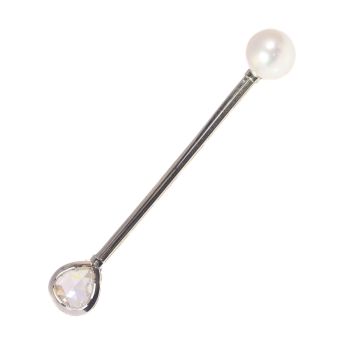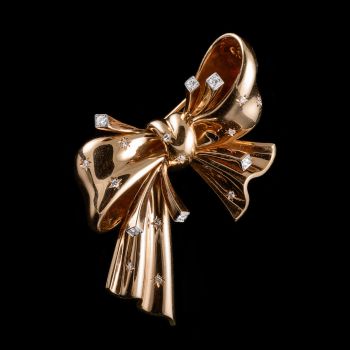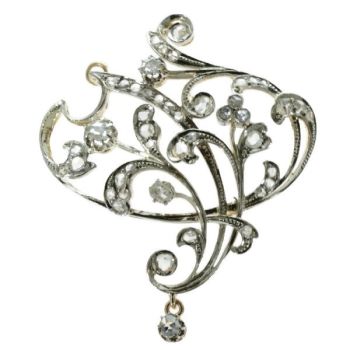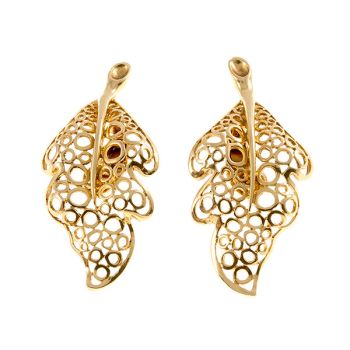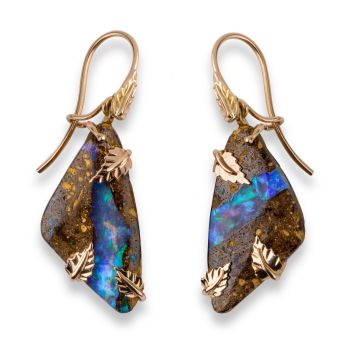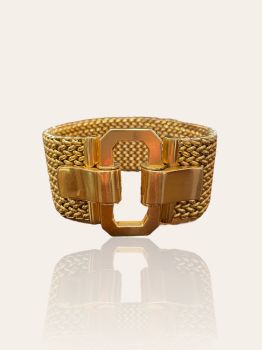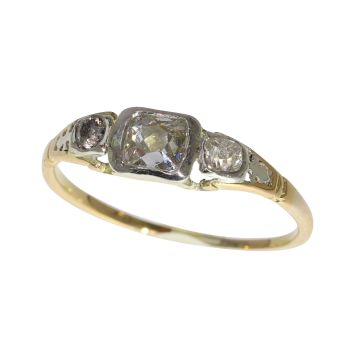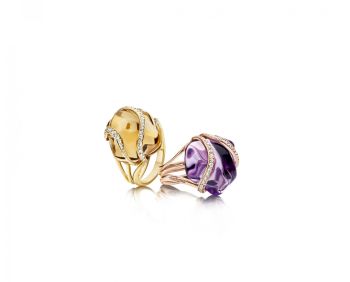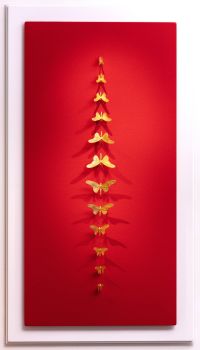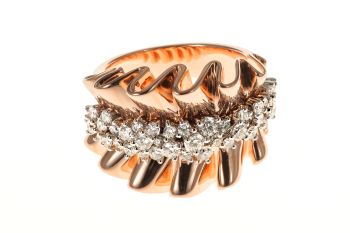Antico cammeo in agata calcedonio con montatura in oro e mezze perle 1880
Artista Sconosciuto
OroCammeo
Attualmente non disponibile tramite Gallerease
- A proposito di opere d'arte
Antique jewelry object group: brooch
Condition: excellent condition
- (more info on our condition scale)
Country of origin: Netherlands
Style: Victorian - Victorian decorative arts refers to the style of decorative arts during the Victorian era. The Victorian era is known for its eclectic revival and interpretation of historic styles and the introduction of cross-cultural influences from themiddle east and Asia in furniture, fittings, and Interior decoration. Victorian design is widely viewed as having indulged in a regrettable excess of ornament. The Arts and Crafts movement, the aesthetic movement, Anglo-Japanese style, and Art Nouveaustyle have their beginnings in the late Victorian era.
- See also: Victorianor more info on styles
Period: ca. 1880
- (fashion and events & facts of this era)
Source of inspiration: Mythology
Theme: Bacchus
Material: 14K red gold
- (more info on precious metals)
Technique: Cameo is a method of carving, or an item of jewellery or vessel made in this manner. It features a raised (positive) relief image. There are three main materials for Cameo carving; Shells or Agate (called a Hardstone cameo), and glass. Cameos can beproduced by setting a carved relief, such as a portrait, onto a background of a contrasting colour. This is called an assembled cameo. Alternately, a cameo can be carved directly out of a material with integral layers or banding, such as (banded) agateor layered glass, where different layers have different colours. Sometimes dyes are used to enhance these colours. Cameos are often worn as jewellery. Stone cameos of great artistry were made in Greece dating back as far as the 6th century BC. They werevery popular in Ancient Rome, and one of the most famous stone cameos from this period is the Gemma Claudia made for the Emperor Claudius. The technique has since enjoyed periodic revivals, notably in the early Renaissance, and again in the 17th, 18thand 19th centuries.
Extra information: Bacchus - This represents a faun wearing a vine leaf crown on his head. A ram's leg appears on his shoulder, which could refer to the Greek myth of Jason and the Golden Fleece. On the other hand looking at the grape decoration in the hair one could also deducethat the person depicted is Bacchus. (He is described as being womanly or "man-womanish")
Bacchus to the Greek and Dionysus or Dionysos to the Romans, the god of wine, represents not only the intoxicating power of wine, but also its social and beneficial influences. He is the patron deity of agriculture and the theatre. He was also known asthe Liberator (Eleutherios), freeing one from one's normal self, by madness, ecstasy, or wine. His divine mission was to mingle the music of the aulos and to bring an end to care and worry. There is also an aspect of Dionysus on his relationship to the"cult of the souls", and the scholar Xavier Riu writes that Dionysus presided over communication between the living and the dead.
Bacchus was the son of Jupiter (Zeus) and Semele. Juno (Hera), to gratify her resentment against Semele, contrived a plan for her destruction. Jove took the infant Bacchus and gave him in charge to the Nysacan nymphs and for their care were rewarded byJupiter. When Bacchus grew up he discovered the culture of the vine and the mode of extracting its precious juice. Juno struck him with madness but he was cured by the goddess Rhea who taught him how to show the people the cultivation of the vine.
The name Bacchus came into use in ancient Greece during the 5th century BC. It refers to the cries with which he was worshipped at the Bacchanalia, frenetic celebrations in his honor. He is viewed as the promoter of civilization, a lawgiver, and lover of peace - as well as the patron deity of agriculture and the theater.
For more information on Bacchus see Wikipedia (opens in new window) Bacchus - Bacchus or Dionysus or Dionysos is the ancient Greek god of wine, wine cups, wineskin, grapes, theater, and fertility. The god who inspires ritual madness, joyful worship, and ecstasy, carnivals, celebration and a major figure of Greek mythology. Heis included as one of the twelve Olympians in some lists. Dionysus is typical of the god of the epiphany, "the god that comes". He was also known as Bacchus, the name adopted by the Romans and the frenzy he induces, bakkheia. In addition to winemaking,he is the patron deity of agriculture and the theater. Hailed as an Asiatic foreigner, he was thought to have had strong ties to the East and to Ethiopia in the South. He was also known as the Liberator (Eleutherios), freeing one from one's normal self,by madness, ecstasy or wine.The divine mission of Dionysus was to mingle the music of the aulos and to bring an end to care and worry. Scholars have discussed Dionysus' relationship to the "cult of the souls" and his ability to preside over communication between the living and the dead.
The bull, the serpent, the ivy and the wine are the signs of the characteristic Dionysian atmosphere, and Dionysus is strongly associated with satyrs, centaurs, and sileni. He is often shown riding a leopard, wearing a leopard skin, or in a chariot drawn by panthers, and may also be recognized by the thyrsus he carries. Besides the grapevine and its wild barren alter-ego, the toxic ivy plant, both sacred to him, the fig was also his symbol. The pinecone that tipped his thyrsus linked him to Cybele, andthe pomegranate linked him to Demeter. (from: Wikipedia)
Precious stones:One chalcedony cameo and24 half seed pearls
- (more info on precious stones)
Birthstones: Pearl is the birthstone (or month stone) for June.
- (more info on birthstones)
Hallmarks: The Dutch control mark representing an oak leaf and that was in use between 1852 and 1906.
- (more info on hallmarks)
Dimensions: 3,36 cm (1,32 inch) x 2,52 cm (0,99 inch)
Weight: 10,80 gram (6,94 dwt)
Reference Nº: 15178-0120
Copyright photography: Adin, fine antique jewelry
- A proposito di opere artista
Può succedere che un artista o un creatore sia sconosciuto.
Alcune opere non sono determinate da chi sono state realizzate o sono state realizzate da (un gruppo di) artigiani. Esempi sono statue dell'antichità, mobili, specchi o firme non chiare o leggibili ma anche alcune opere non sono affatto firmate.
Inoltre puoi trovare la seguente descrizione:
•"Attribuito a …." A loro avviso probabilmente opera dell'artista, almeno in parte
•“Studio di ….” o “Officina di” A loro avviso un'opera eseguita nello studio o nella bottega dell'artista, eventualmente sotto la sua supervisione
•“Cerchio di…” A loro avviso un'opera del periodo dell'artista che mostra la sua influenza, strettamente legata all'artista ma non necessariamente al suo allievo
•"Stile di..." o "Seguace di..." A loro avviso un'opera eseguita nello stile dell'artista ma non necessariamente da un allievo; può essere contemporaneo o quasi contemporaneo
•“Modalità di…” A loro avviso un'opera nello stile dell'artista ma di epoca successiva
•"Dopo …." A loro avviso una copia (di qualsiasi data) di un'opera dell'artista
•“Firmato…”, “Datato…” o “Iscritto” A loro avviso l'opera è stata firmata/datata/inscritta dall'artista. L'aggiunta di un punto interrogativo indica un elemento di dubbio
•"Con firma....", "Con data...", "Con iscrizione..." o “Riporta firma/data/iscrizione” a loro avviso la firma/data/iscrizione è stata aggiunta da qualcuno diverso dall'artista
Artwork details
Related artworks
Artista Sconosciuto
A large wall map of Asia by Nicolas de Fer 1647 - 1720
Prezzo su richiestaZebregs & Röell - Fine Art - Antiques
Artista Sconosciuto
UN COPPETTO DI PIUME DELLA TRIB JURUNA1900 - 1950
Prezzo su richiestaZebregs & Röell - Fine Art - Antiques
1 - 4 / 12- 1 - 4 / 24
Fernand Paillet
spilla con paillettes1880 - 1900
Prezzo su richiestaAns Hemke-Kuilboer Juwelier & Antiquair
Artista Sconosciuto
Spilla in stile Art Déco antico1920
Prezzo su richiestaAns Hemke-Kuilboer Juwelier & Antiquair
Mauboussin
Spilla fiocco Mauboussin1950 - 1955
Prezzo su richiestaAns Hemke-Kuilboer Juwelier & Antiquair
1 - 4 / 24Artista Sconosciuto
Anello Fantasia in Oro Rosso con Diamanti2017
Prezzo su richiestaLyppens Juweliers
1 - 4 / 24

